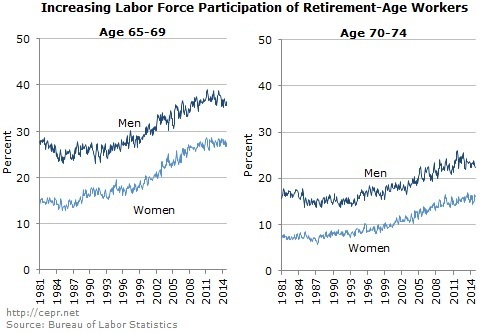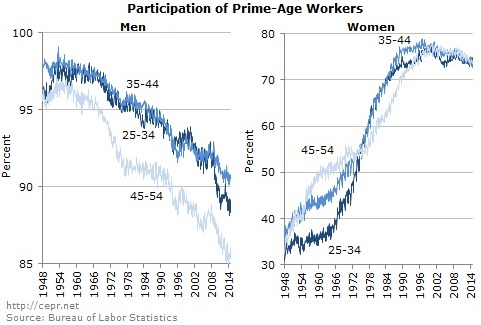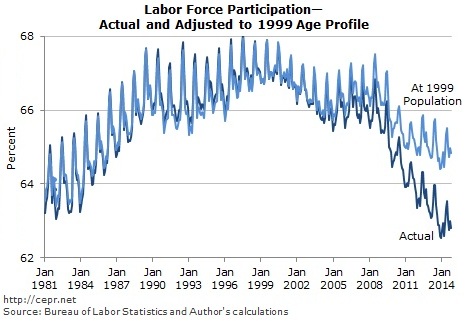December 22, 2014
In early 2000, the civilian labor force participation rate peaked at a post-war high of 67.3 percent of the population aged 16 and over. Despite flattening out in the latter part of the decade at about 66 percent, participation rates never recovered and have steadily fallen since the onset of the Great Recession. At 62.8 percent as of November 2014, labor force participation is now at its lowest level since 1978.
Some of this fall is clearly demographic. Workers are much less likely to have or search for a job once near or past retirement age, as seen in Figure 1.
Figure 1:

Thus, the aging of the baby boom generation has reduced the size of the labor force. On the other hand, retirement-age workers are participating at a much higher rate than before. In small part, this is because baby-boomers have reduced the average age of those 65 and over. However, labor force participation in the older population has been rising for some time, as seen in Figure 2.
Figure 2:

On the other hand, prime-age workers (25-54) are participating much less since the collapse of the tech bubble, as we see in Figure 3. In particular, participation by men has continued a general downward trend while participation by women has largely declined since 2000.
Figure 3:

Overall, there has been a significant decline in the rate of participation, even if we assume the age distribution of the population had remained the same as it was in 1999. This is effectively the flip side of an analysis performed by the Council of Economic Advisors in their Figure 8. Figure 4 shows the overall (age 16 and up) rate of participation in the labor force—both with and without controlling for changes in the age distribution.
Figure 4:

As it had through most of the post-war period, the decline in the overall labor force participation rate following the tech bubble was almost exclusively driven by changes in participation rates within each population subgroup. By contrast, there has been considerable divergence since 2007, indicating that aging of the population has had some impact on the overall participation rate. Nevertheless, even when controlling for the age and sex distribution of the population, labor force participation is 2.3 percentage points lower in 2014 relative to 1999.
In the end, though the retirement of the baby boomers has shrunk the size of the labor force, the low participation rate confirms that the economy is still quite depressed. Compared to 1999, upwards of 3.7 million prime-age workers remain outside the workforce.






